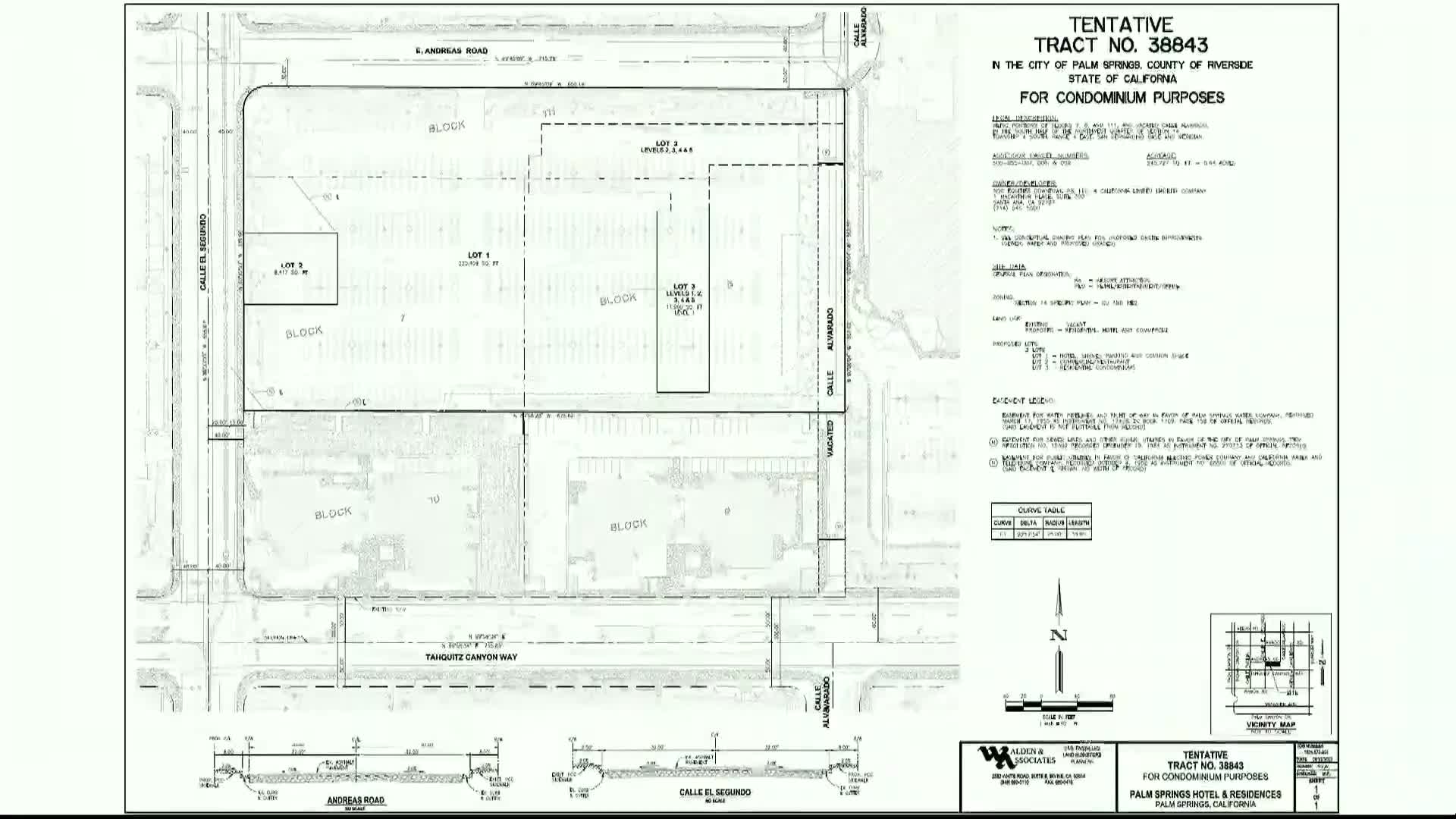Palm Springs Planning Commission approves hotel and condo project with 500 parking spaces
September 17, 2025 | Palm Springs, Riverside County, California
This article was created by AI summarizing key points discussed. AI makes mistakes, so for full details and context, please refer to the video of the full meeting. Please report any errors so we can fix them. Report an error »

In the heart of Palm Springs, city officials gathered on September 16, 2025, to discuss a significant development project that promises to reshape the local landscape. The Planning Commission meeting, held in the bustling city hall, focused on a proposal to combine three existing lots into a single expansive 5.46-acre site. This ambitious project includes plans for a 257-room hotel, residential condominiums, and various amenities designed to enhance the community's appeal.
The proposed development features a comprehensive landscape plan, showcasing plantings along East Andreas and around a central event lawn and pool area. A detailed tree and shrub legend was presented, indicating the types of vegetation that will be incorporated as the project progresses. The design also includes substantial parking solutions, with 100 spaces in an underground garage and an additional 400 spaces across four levels in a parking structure. This arrangement aims to accommodate both hotel guests and visitors to the restaurant and ballroom facilities.
During the meeting, city staff outlined the project's compliance with environmental regulations, noting that a mitigated negative declaration (MND) had been prepared. This assessment concluded that the project would not significantly impact local biology, culture, geology, or transportation. The commission reviewed eight public comments related to the project, all of which were addressed and made available for public scrutiny.
Key findings necessary for the approval of the tentative track map were discussed, including consistency with the general plan and zoning regulations, as well as considerations for public health and environmental impact. Staff expressed confidence that the findings could be met, paving the way for the major development permit and conditional use permit (CUP) required for the high-rise building, which will stand at 99.8 feet.
Commissioners engaged in a dialogue about the relationship between the hotel and residential units, seeking clarity on whether the hotel would be considered the primary use. Staff clarified that both uses would coexist without one being deemed secondary to the other, allowing for flexibility in how the units might be utilized.
As the meeting progressed, staff recommended the adoption of the MND and approval of the tentative track map, major development permit, and CUP, emphasizing that the project aligns with the city’s planning goals. The public hearing was opened for further discussion, with city officials prepared to address any lingering questions from the community.
This development marks a pivotal moment for Palm Springs, as it seeks to balance growth with the preservation of its unique character. As the project moves forward, residents and stakeholders will be watching closely, eager to see how this ambitious vision unfolds in their vibrant city.
The proposed development features a comprehensive landscape plan, showcasing plantings along East Andreas and around a central event lawn and pool area. A detailed tree and shrub legend was presented, indicating the types of vegetation that will be incorporated as the project progresses. The design also includes substantial parking solutions, with 100 spaces in an underground garage and an additional 400 spaces across four levels in a parking structure. This arrangement aims to accommodate both hotel guests and visitors to the restaurant and ballroom facilities.
During the meeting, city staff outlined the project's compliance with environmental regulations, noting that a mitigated negative declaration (MND) had been prepared. This assessment concluded that the project would not significantly impact local biology, culture, geology, or transportation. The commission reviewed eight public comments related to the project, all of which were addressed and made available for public scrutiny.
Key findings necessary for the approval of the tentative track map were discussed, including consistency with the general plan and zoning regulations, as well as considerations for public health and environmental impact. Staff expressed confidence that the findings could be met, paving the way for the major development permit and conditional use permit (CUP) required for the high-rise building, which will stand at 99.8 feet.
Commissioners engaged in a dialogue about the relationship between the hotel and residential units, seeking clarity on whether the hotel would be considered the primary use. Staff clarified that both uses would coexist without one being deemed secondary to the other, allowing for flexibility in how the units might be utilized.
As the meeting progressed, staff recommended the adoption of the MND and approval of the tentative track map, major development permit, and CUP, emphasizing that the project aligns with the city’s planning goals. The public hearing was opened for further discussion, with city officials prepared to address any lingering questions from the community.
This development marks a pivotal moment for Palm Springs, as it seeks to balance growth with the preservation of its unique character. As the project moves forward, residents and stakeholders will be watching closely, eager to see how this ambitious vision unfolds in their vibrant city.
View full meeting
This article is based on a recent meeting—watch the full video and explore the complete transcript for deeper insights into the discussion.
View full meeting
